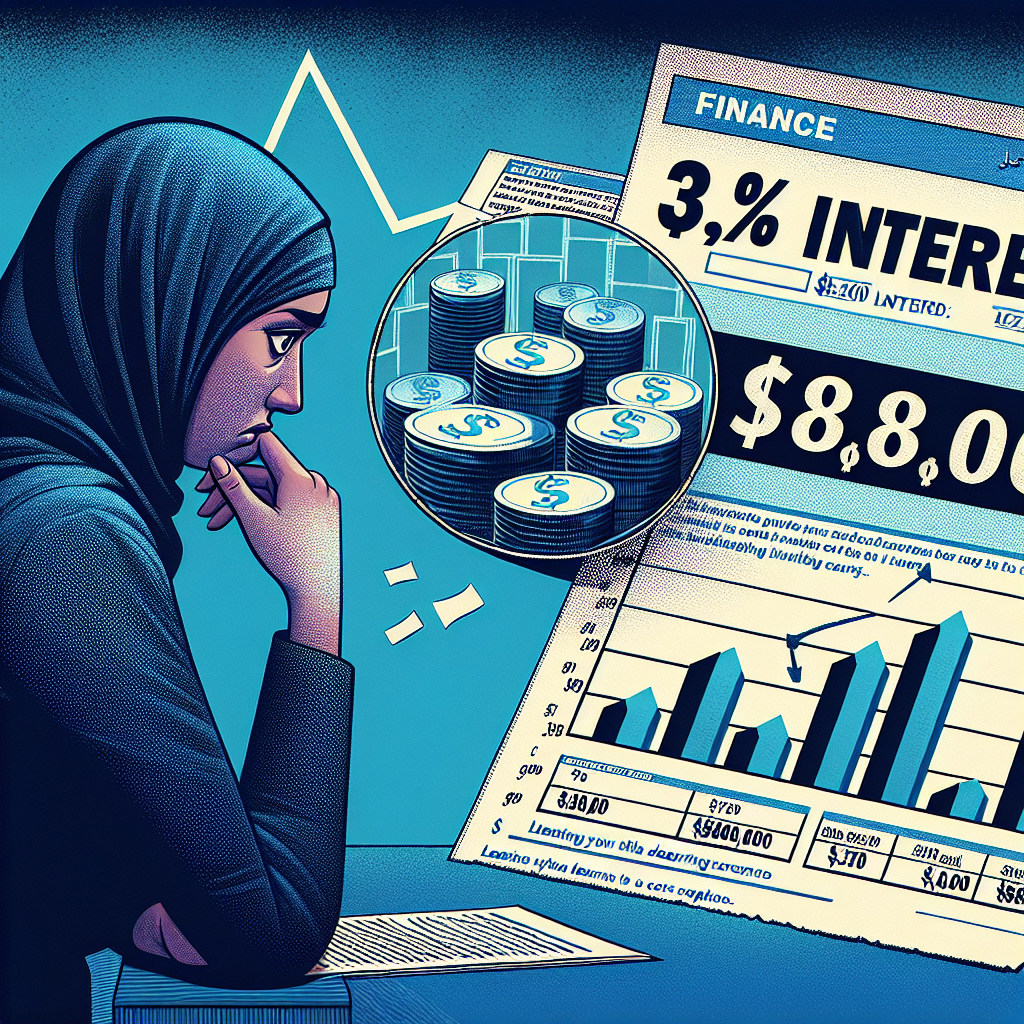-
Table of Contents
- How a 3% Interest Rate Ended Up Costing Me $180,000 (Learn from My Experience)
- The Allure of a Low Interest Rate
- Why Low Interest Rates Seem Beneficial
- The Hidden Costs of a Low Interest Rate
- 1. Overextending Financial Commitments
- 2. Ignoring Other Loan Terms
- 3. Underestimating Maintenance and Repair Costs
- 4. Opportunity Cost of Tied-Up Capital
- Case Study: The Real Cost of My Mortgage
- Initial Mortgage Details
- Monthly Mortgage Payment
- Additional Costs and Factors
- Total Financial Impact
- Lessons Learned and Tips for Homebuyers
- 1. Consider the Total Cost of Homeownership
- 2. Avoid Overextending Your Finances
- 3. Evaluate Other Loan Terms
- 4. Consider Opportunity Costs
- 5. Plan for Maintenance and Repairs
- Conclusion
How a 3% Interest Rate Ended Up Costing Me $180,000 (Learn from My Experience)

When I first secured a mortgage with a 3% interest rate, I thought I had struck gold. The rate was historically low, and I felt confident that I had made a financially sound decision. However, as the years went by, I realized that this seemingly advantageous interest rate had cost me a staggering $180,000. This article delves into my experience, highlighting the pitfalls and lessons learned, so you can avoid making the same mistakes.
The Allure of a Low Interest Rate
Low interest rates are incredibly enticing. They promise lower monthly payments and reduced overall interest costs. In 2020, when interest rates plummeted due to economic uncertainties, many homeowners, including myself, rushed to refinance or secure new mortgages at these attractive rates.
Why Low Interest Rates Seem Beneficial
- Lower monthly mortgage payments
- Reduced total interest paid over the life of the loan
- Increased affordability of homes
- Potential for higher savings and investments
These benefits are real and significant, but they can also create a false sense of security. In my case, the 3% interest rate masked several underlying issues that ultimately led to substantial financial losses.
The Hidden Costs of a Low Interest Rate
While a low interest rate can be beneficial, it is crucial to consider the broader financial picture. Here are some hidden costs and factors that contributed to my $180,000 loss:
1. Overextending Financial Commitments
With a lower interest rate, I felt more comfortable taking on additional financial commitments. I purchased a larger home, assuming that the lower monthly payments would make it affordable. However, this decision stretched my finances thin, leaving little room for unexpected expenses or changes in income.
2. Ignoring Other Loan Terms
The focus on the low interest rate led me to overlook other critical loan terms, such as:
- High closing costs
- Prepayment penalties
- Adjustable-rate mortgage (ARM) terms
These additional costs and terms added up over time, significantly increasing the overall cost of the mortgage.
3. Underestimating Maintenance and Repair Costs
Purchasing a larger home also meant higher maintenance and repair costs. I underestimated these expenses, which quickly added up and strained my budget. The low interest rate did not compensate for the increased costs of homeownership.
4. Opportunity Cost of Tied-Up Capital
By investing a significant portion of my capital into the home, I missed out on other investment opportunities. The money tied up in the property could have been invested in higher-yielding assets, potentially generating substantial returns over time.
Case Study: The Real Cost of My Mortgage
To illustrate the financial impact of my decisions, let’s break down the costs associated with my mortgage:
Initial Mortgage Details
- Home purchase price: $500,000
- Down payment: $100,000 (20%)
- Loan amount: $400,000
- Interest rate: 3%
- Loan term: 30 years
Monthly Mortgage Payment
With a 3% interest rate, my monthly mortgage payment (excluding taxes and insurance) was approximately $1,686. However, this figure does not account for other costs and factors that contributed to my financial loss.
Additional Costs and Factors
- Closing costs: $10,000
- Prepayment penalty: $5,000
- Maintenance and repairs: $50,000 over 10 years
- Opportunity cost of tied-up capital: $100,000 (estimated investment returns over 10 years)
Total Financial Impact
When we add up these additional costs and factors, the total financial impact is as follows:
- Closing costs: $10,000
- Prepayment penalty: $5,000
- Maintenance and repairs: $50,000
- Opportunity cost: $100,000
- Total: $165,000
While this total is slightly less than $180,000, it does not account for other potential costs, such as property taxes, insurance, and potential market fluctuations. The overall financial impact of my decisions was significant and far exceeded the initial savings from the low interest rate.
Lessons Learned and Tips for Homebuyers
My experience taught me several valuable lessons that can help other homebuyers make more informed decisions. Here are some key takeaways:
1. Consider the Total Cost of Homeownership
When evaluating a mortgage, consider all associated costs, including closing costs, maintenance, repairs, property taxes, and insurance. A low interest rate is just one piece of the puzzle.
2. Avoid Overextending Your Finances
Be realistic about what you can afford. Avoid stretching your finances too thin, even if a low interest rate makes a larger home seem affordable. Leave room in your budget for unexpected expenses and changes in income.
3. Evaluate Other Loan Terms
Pay attention to all loan terms, not just the interest rate. Look for hidden costs, such as prepayment penalties and adjustable-rate mortgage terms, that could increase the overall cost of the loan.
4. Consider Opportunity Costs
Think about the opportunity cost of tying up capital in a home. Consider whether investing in other assets could generate higher returns over time.
5. Plan for Maintenance and Repairs
Factor in the cost of maintenance and repairs when budgeting for homeownership. Older or larger homes may require more significant upkeep, which can add up over time.
Conclusion
While a low interest rate can be appealing, it is essential to consider the broader financial picture. My experience with a 3% interest rate mortgage taught me that focusing solely on the interest rate can lead to significant financial losses. By considering all associated costs, avoiding overextending your finances, evaluating loan terms, and planning for maintenance and repairs, you can make more informed decisions and avoid the pitfalls I encountered.
Ultimately, the key takeaway is to approach homeownership with a comprehensive understanding of the total cost and financial implications. By learning from my experience, you can make smarter financial choices and avoid the costly mistakes that led to my $180,000 loss.








